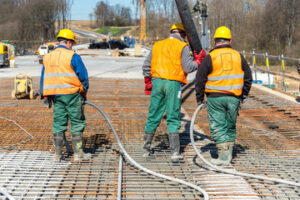Window replacement is a big project and you want to work with a company that is reputable and will be there for support after the job is completed. Ask friends, family and neighbors who have had work done for recommendations.

Compare the companies’ window styles and materials offered. Aside from vinyl and fiberglass, consider wood as an option if it fits your climate and home aesthetic. Get in touch with Window Replacement Massachusetts for professional support.
The frame material used in window replacement has a significant impact on how your windows perform and look over time. The right material can improve energy efficiency, reduce maintenance needs and upkeep costs, and enhance your home’s design aesthetic. There are four main frame materials available: vinyl, composite (typically fiberglass), clad wood and aluminum. Each has its own benefits and drawbacks, so deciding which is best for your project requires careful consideration of your specific needs.
Affordability and low maintenance requirements are some of the primary reasons homeowners opt for vinyl frames. They are also available in a wide range of colors, styles, and finishes to suit any design aesthetic. Moreover, they provide good insulation and energy efficiency, cutting down on your energy bills over time.
Compared to other frame materials, composite frames are more expensive but offer better durability and energy efficiency. They contain wood, such as particleboard and laminated strand lumber, mixed with polymer plastics to form a stable composite material. Additionally, they are moisture and decay resistant. However, they are not as insulating as other options, so you might need to add a thermal break to enhance their energy performance.
Aluminum is a cost-efficient option but does not insulate well. It transfers heat quickly and can affect indoor comfort, but you can mitigate this issue by adding a thermal break to the frame.
Wood frames have a classic, timeless appeal that can greatly boost your home’s curb appeal. They also have a natural appearance and feel that blends beautifully with any architectural style. Wood is available in a variety of types, including softwoods like pine and fir, as well as hardwoods such as redwood and west African sapele. Regardless of the type, you should choose wood certified by the Forest Stewardship Council to ensure responsible forestry practices.
Glass
Glass is a key component in most windows and doors, bringing light into a room and creating a unique look. It also fulfills many practical requirements like reducing outside noise and blocking harmful UV rays. Glass can be glazed or tinted to improve privacy and style. High-quality glass options can also boost energy efficiency and reduce your utility bills. The type of glass you choose depends on your priorities and needs.
There are six types of window glass, each fulfilling a different purpose and offering different benefits. Float glass, which is a basic piece of clear glass, is the most budget-friendly option. It doesn’t go through any coatings or enhancements, making it simple and cheap. However, it’s very vulnerable to breaking and can shatter into sharp shards. This glass is commonly used in older windows or in outdoor structures. For those who are looking for a stronger, more durable option, tempered glass is the way to go. It goes through a heating and chemical process that makes it about five times as strong as plain float glass. This makes it a great choice for homes near walkways where window damage might be an issue.
Insulated glass is another high-quality option. This window type contains multiple panes of glass with spacer bars between them. Inert gases like argon fill the space between the glass to increase insulation and lower the U-factor of the window. This type of glass is more expensive than float glass, but it will help you save money on your utility bills in the long run.
Some windows have muntins and mullions in between their panes, which is an architectural feature that adds style to a building. These are also known as divided-light windows and offer the benefit of increasing ventilation. In addition to allowing air to circulate in a home, these windows are easy to clean and provide an appealing visual accent to a space. They are also a good choice for large windows or those that face west or south to block harsh sunlight. They can be made with a variety of glass types and coatings, but the best options are low-E and insulated.
Weatherstripping
One of the biggest ways that air can leak in and out of homes is through doors and windows. Draft proofing these areas by using weather stripping can reduce energy costs and make homes more comfortable. There are many types of weather stripping materials available, so homeowners should decide what is best for their needs and climate.
The best type of weather stripping will be able to withstand the friction, temperature changes, wear and tear, and moisture that it will face in its location. For example, weather stripping that is placed under a door bottom or threshold must be able to withstand foot traffic, and it will need to accommodate the up and down motion of doors and the sliding of window sashes. In addition, the weather stripping in a door or window sash should seal well when the window is closed but allow it to open freely.
To determine which area of a home needs weather stripping, there are several different methods for testing drafts and identifying gaps. The dollar bill test, which only requires one person, involves placing a dollar bill between the door jamb and the actual door and then closing it. If the bill easily slides out, it is time for some weather stripping.
Another method is the simple hand-feeling test. This only works on a dry day, but wetting your hands and feeling around the edges of the frame will indicate where there is a leak. Another option is to place a candle next to the frame, and if you can see that the flame flickers, it is time for some weather stripping.
Whether you choose to use the dollar bill test or the candle flickering technique, you will need to clean the area before applying the weather stripping. It is important that the surface is completely dry before installing weather stripping because it will not stick to dirty surfaces and could eventually fall off.
Once the weather stripping is installed, it will protect your investment and improve your home’s efficiency. It is one of the easiest and most useful do-it-yourself projects that you can complete, and it will pay off with lower utility bills and a more comfortable living space.
Installation
A high-quality window replacement will involve a series of steps. During the first consultation and before any construction begins, a contractor should take technical measurements of your existing window opening. These measurements will be used to ensure that your new windows are properly sized for your existing opening. A high-quality installer will measure in multiple spots, typically three or more to get the most accurate and consistent readings.
Often these measurements are taken from the inside of the frame but a good contractor will also measure from the outside to make sure that they are capturing the entire area of the window. This will help to ensure that your new windows are a perfect fit in your existing opening and that you don’t have to worry about any issues with air leakage or water infiltration down the line.
Once the measurements are made it’s time to prepare the window opening for the new frame. This involves removing any existing trim, and scraping down the surfaces for any damaged or missing materials. This process is especially important if your home is in a historic district or has been recently restored. This is why it’s so important to work with a professional who can manage the details and timelines for your project.
When the opening is prepared it’s time to install the window. A high-quality installer will place a tarp over any areas of the house where they will be working and use smaller nails to reduce debris and potential damage during the installation. They should also clean up and vacuum the work area on a regular basis throughout construction. This is one of the most noticeable traits of a high-quality contractor who takes pride in their workmanship and cares about your property.
The window is set into the opening and a level is used to ensure that it is plumb and square. Depending on your window style, it may also need to be installed with shims underneath so that the sill is level and the weeping system drains correctly. A good contractor will never put holes in a new window or run fasteners through the bottom of the frame as this can cause moisture and air leakage problems down the line.
